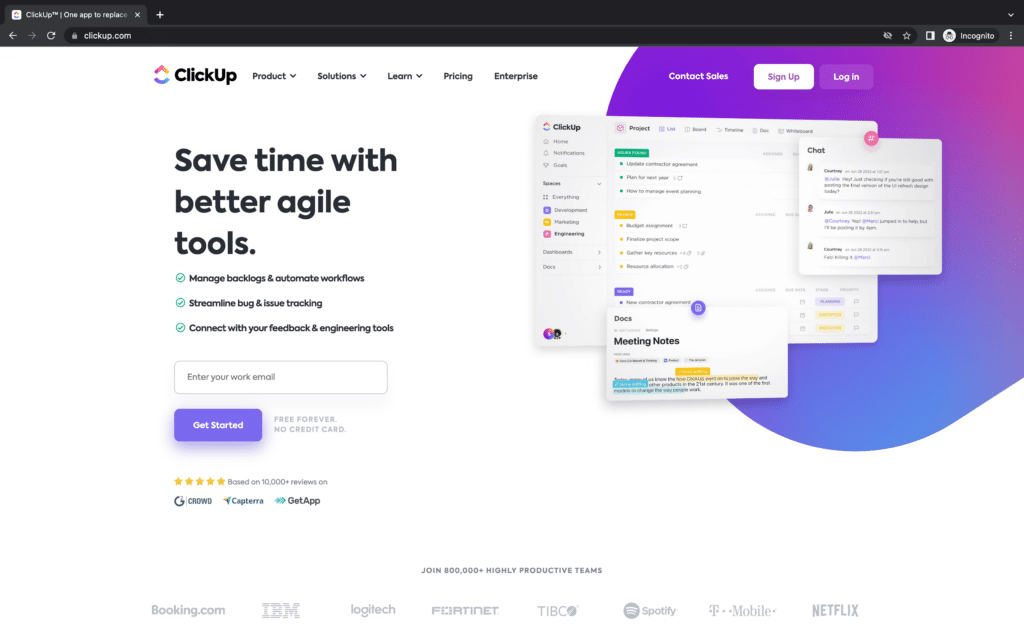Are you struggling to convert website visitors into paying customers? Do you feel like your online marketing efforts are falling short? If so, it’s time to consider implementing a conversion rate optimization (CRO) strategy.
CRO marketing is the process of improving your website’s performance by increasing the percentage of visitors who take a desired action, such as making a purchase or filling out a contact form. By optimizing your website for conversions, you can increase your revenue and grow your business.
Why CRO Marketing Matters
In today’s digital age, having a strong online presence is essential for any business. However, simply having a website isn’t enough. You need to ensure that your website is optimized to convert visitors into customers.
The average website conversion rate is roughly 2.35%, according to a variety of sources. That means, for every 100 visitors a website will convert between 2 to 3 people to a lead, not a sale! Wouldn’t it be nice to increase your opportunities for sales?
Here are some reasons why CRO marketing matters:
- Increased Revenue: By converting more visitors into customers, you can increase your revenue without spending more on advertising.
- Better User Experience: A well-optimized website provides a better user experience, which can lead to increased customer loyalty and repeat business.
- Competitive Advantage: By optimizing your website for conversions, you can gain a competitive advantage over businesses that aren’t using CRO marketing.
Ultimately, focusing on conversion rate optimization can dramatically improve your sales, and customer experience, and set up a company for future success in recessions and down economies. Without CRO marketing, your digital marketing strategies can easily fail.
Let’s now talk about how you can implement a CRO strategy.
How to Implement a CRO Strategy
Implementing a CRO strategy involves several steps, including:
- Analyzing Your Website: The first step in implementing a CRO strategy is to analyze your website to identify areas for improvement. This may involve analyzing your website’s traffic, user behavior, and conversion rates.
- Setting Goals: Once you’ve identified areas for improvement, you need to set specific goals for your CRO strategy. For example, you may want to increase your website’s conversion rate by 10% within the next six months.
- Testing and Optimization: After setting goals, you need to test different elements of your website to see what works best. This may involve testing different headlines, images, or calls to action.
- Analyzing Results: Finally, you need to analyze the results of your tests and make adjustments as needed. By continually analyzing and optimizing your website, you can improve your conversion rates over time.
Let’s go into each of those in more detail.

Analyzing Your Website
To analyze a website’s user traffic and behavior for CRO marketing, there are several tools and techniques that can be used. The first step is to set up web analytics software such as Google Analytics, PageSpeed Testing Tools, and Google Search Console to track user behavior and website performance. This will provide valuable insights into how users interact with the site, including which pages they visit, how long they stay on each page, where they exit, and even site speed and mobile performance.
Once the analytics software is set up, it’s important to define key performance indicators (KPIs) that will be used to measure the success of the CRO marketing campaign. These KPIs could include metrics such as conversion rate, bounce rate, time on site, and average order value.
Here are a few sample KPI metrics you may want to consider using:
- Average Bounce Rate – Google Analytics will tell you this metric.
- Average Conversion Rate – Learn how to set up conversion rates in Google Analytics.
- Average Core Web Vital Score – Use Web Page testing tools like Google or GTMetrix.
I would also consider listing the top 5 pages with the worst bounce rate, conversion rate, and core web vital score every rolling 30-day period to aim for improvements on your worse-performing pages.
To gain a deeper understanding of user behavior, it’s also important to conduct user research through surveys, focus groups, or user testing. This can help identify pain points in the user experience and provide insights into how to improve the website’s design and functionality.
Finally, you may also consider mapping your customer journey or customer lead funnel. Use that data to match the customer journey/funnel alongside your web pages. Then, focus on the most critical web pages that lead to conversions first such as your pricing page, home page, and service/product pages.
Once you have set your KPIs, collected data, and gained a deeper understanding of your user behavior, you can set goals in your CRO marketing strategy.
Setting Goals
Using your current KPI metrics found during the website analysis process, it is time to set goals. Your goals should be SMART goals. That means your goals should be specific, measurable, attainable, relevant, and time-bound.
Here are a few smart goals based on some KPI metrics you may consider using:
- Average Bounce Rate – Improve average bounce rate by 10% in the first 90 days.
- Average Conversion Rate – Improve average conversion rate by 1.5% in the first 90 days.
- Average Core Web Vitals – Achieve a passing core web vitals score on the worst 10 performing pages in the first 90 days.
After setting your SMART goals, your strategy and optimization process becomes a whole lot more clear.
Testing & Optimization
With clear key performance indicators, you can now begin your optimization and testing. You should set a schedule of when you are going to work on particular goals over the course of your time period set within the SMART goal.
For instance, I might set a passing core web vitals score objective every week for one page.
A/B testing can also be used to test different variations of the website to see which version performs better in terms of the defined KPIs. This can help optimize the website for maximum conversions and improve the overall user experience.
To illustrate, if you were running a Google Ad Campaign, you can create a campaign test to split your website traffic between two pages. Then, Google Ads will tell you after a set period of time which page received more conversions.
Analyzing Results
Finally, you need a set schedule to analyze your results. We recommend reviewing KPI performance every 30 days as you may not see much of a difference from week to week.
After a period of 90 days, you can begin to see trends in how your conversion rate optimization is performing. Based on performance, you may decide to adjust your optimization strategy or adjust your KPIs.
It’s important to consider that KPIs and goals can change. Your goals should not be too easily attainable or too difficult. Moreover, your goals should also become meaningful and make a difference in your bottom line of sales.
How To Set Up Conversion Rate Tracking
If you haven’t already, you need to set up conversion/lead tracking either through dynamic call/form tracking or through the Google Analytics conversion tracking tool. We find using dynamic call/form tracking, also called lead tracking, to be the most effective and easiest way for home service businesses to track conversions and leads, but it can depend on your industry and setup.
Now, let’s jump into some tips to be successful in your CRO marketing strategies.
Tips for Successful CRO Marketing
Here are some tips for implementing a successful CRO marketing strategy.
Focus on Your Target Audience
To optimize your website for conversions, you need to understand your target audience and what motivates them to take action. For example, getting a quote for services before purchasing services may be better for larger transactions. Also, showing lots of social proof/reviews can help incentivize customers to take action.
Additionally, focusing on your target audience’s pain points in headlines and subheadings can help them resonate with your message.
Use Clear Calls-to-Action
Make it clear what you want visitors to do on your website by using clear and prominent calls to action. We recommend using on-brand, high-contrasting colors for your CTA buttons. While they do not have to be the same color or the same wording every time, they should match the look of your website and be easily seen/readable.
Test Different Elements
Don’t be afraid to test different elements of your website to see what works best. This may include testing different headlines, images, or colors. For example, we found an image of a family smiling may perform better than a skyline view of a city.
Analyze Your Data
Continually analyze your website’s data to identify areas for improvement and make data-driven decisions. Be sure to set routine tasks to review your Google Analytics, Search Console, Page performance, and other metric data.
Frequently Asked Questions
What Is CRO in Marketing?
CRO in marketing is the process of optimizing a website for conversion rates. While many marketers may optimize a Google Ad campaign or search engine performance, CRO focuses on improving sales from the traffic your website already has.
What Are Some Examples of CRO Marketing?
CRO marketing examples can be found all over the internet. One of the easiest ways to see CRO marketing in action is to review large SAAS company websites! Check out ClickUp’s homepage below.

ClickUp has made CRO a priority and you can see that through the following:
- Clear call to actions by the getting started button.
- Showcasing online reviews and social proof.
- Showing other companies that trust ClickUp.
- Writing a clear headline with subheadings to give extra information.
- Providing an image on the right that really showcases their product and what makes them different.
You can find more examples by looking at other sites like SendInBlue.com or Asana.com. Also, check out our post on improving conversion rates for SEO landing pages.
What Is A Good Conversion Rate?
Across all industries, the average conversion rate is 2.35%. Your conversion rate can be dependent on the industry, however, anything above average can be considered good.
You should also consider your website traffic source. A conversion rate of 2% on a Google Ad campaign may be on the lower end. Comparatively, a 2% conversion rate from Organic Traffic from search engines can be considered more effective.
At WolfPack Advising, we see an average of 10% conversion rate on our Google Ad landing pages. Conversion rates from organic traffic vary by company and total web traffic. To illustrate, a company with limited organic traffic might see a high conversion rate because searchers are ready to purchase. On the other hand, a website that is getting traffic from various audiences might see its conversion rate be significantly lower since audiences may not be ready to make a purchase.
Final Thoughts
Conversion Rate Optimization (CRO) marketing is a powerful tool for boosting your business’s online performance. By optimizing your website for conversions, you can increase your revenue, improve your user experience, and gain a competitive advantage. By following the tips outlined in this post, you can implement a successful CRO strategy and take your business to the next level.
At WolfPack Advising, we use CRO marketing strategies in every pay-per-click advertising campaign and even for our SEO clients. Interested in getting more sales from your website? Schedule a consultation with us to learn more.






